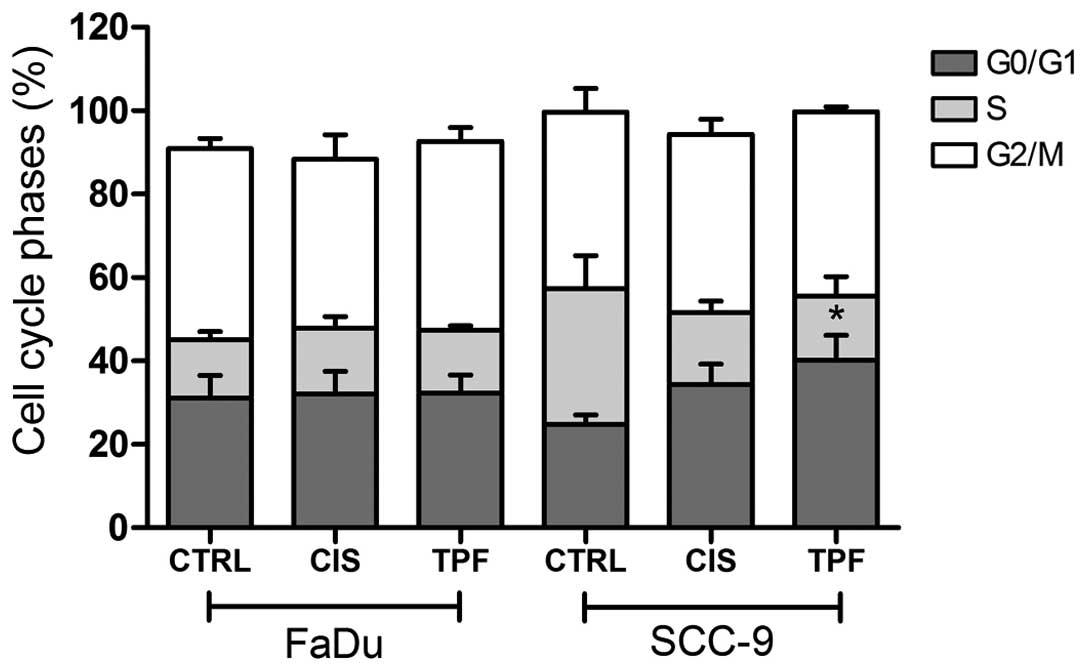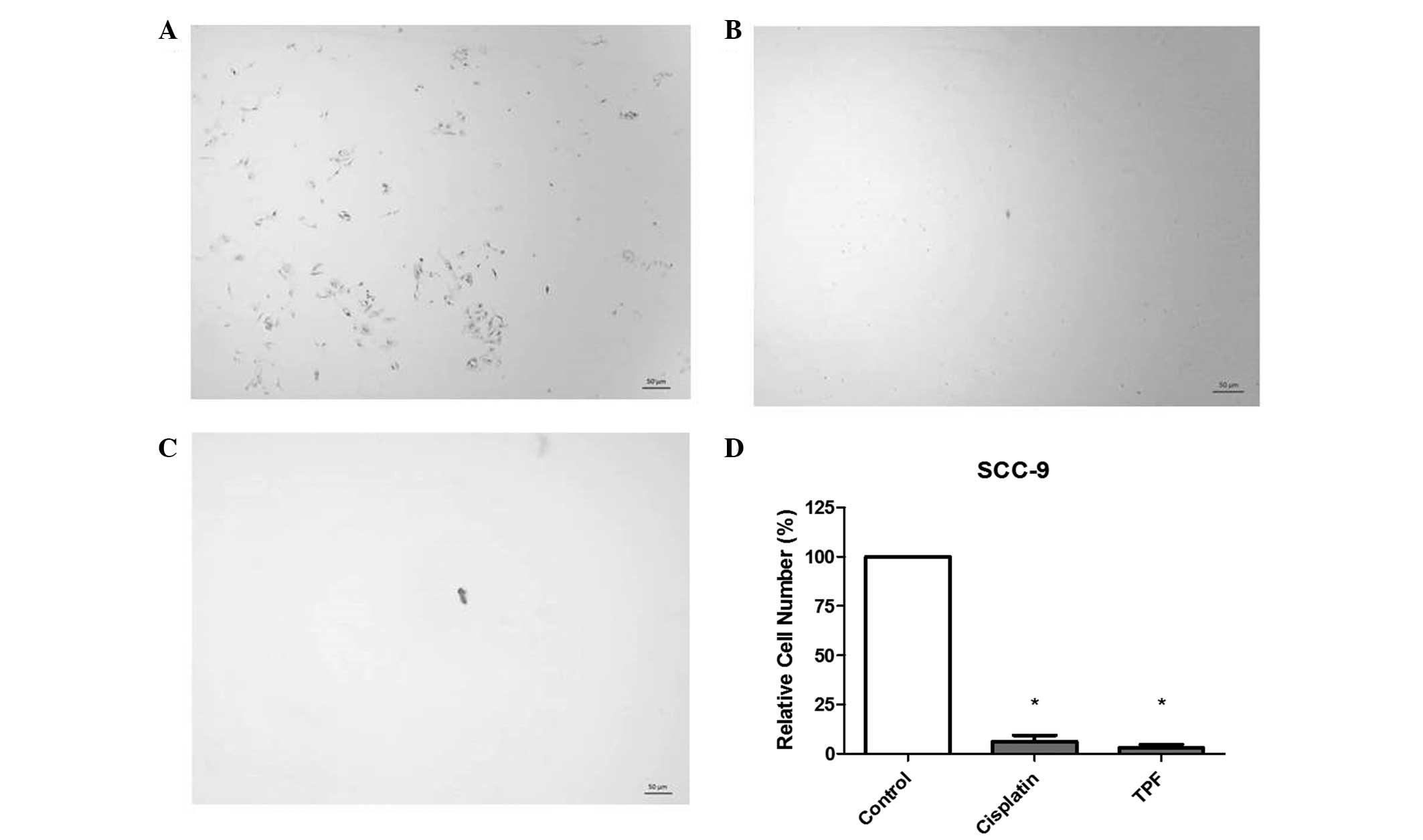Combined paclitaxel, cisplatin and fluorouracil therapy enhances ionizing radiation effects, inhibits migration and induces G0/G1 cell cycle arrest and apoptosis in oral carcinoma cell lines
- Authors:
- Published online on: July 6, 2015 https://doi.org/10.3892/ol.2015.3458
- Pages: 1721-1727
Metrics:
Total
Views: 0 (Spandidos Publications: | PMC Statistics:
)
Total PDF Downloads: 0 (Spandidos Publications: | PMC Statistics:
)
Abstract
Although taxels (in particular paclitaxel), cisplatin and fluorouracil (TPF) chemotherapy has been approved for use in the treatment of head and neck squamous cell carcinoma (HNSCC), little is known with regard to the cellular mechanisms of this novel drug association. In order to investigate the reaction of cells to this novel treatment, the present study aimed to examine the cytotoxic effect of TPF in HNSCC cell lines in combination with irradiation, to analyze its effect on cell cycle progression and cell death, and to evaluate its ability to alter cell migration. An MTT assay was used to determine cell viability following TPF and cisplatin treatments in two human HNSCC cell lines (FaDu and SCC‑9) and one keratinocyte cell line (HaCaT). The concurrent use of TPF or cisplatin and irradiation was also analyzed. Flow cytometric analysis was utilized to determine the cell cycle distribution and to verify the induction of apoptosis. The capacity of the drugs to alter oral cancer cell migration was also evaluated using a Transwell migration assay. The results indicated that TPF and cisplatin were cytotoxic to all cell lines, and enhanced the effects of ionizing radiation. FaDu cells were significantly more sensitive to the two treatments, and TPF was more cytotoxic than cisplatin for all cells. Flow cytometric analysis revealed that TPF increased the number of cells in G0/G1 phase in the SCC‑9 cell line, and indicated apoptotic cell death. The results of the Transwell assay demonstrated that TPF inhibited migration in oral carcinoma cell lines. The results of the present study indicated that TPF functions in oral carcinoma cell lines through the enhancement of ionizing radiation effects, inducing cell cycle arrest at G0/G1 and apoptosis, in addition to inhibiting migration.














